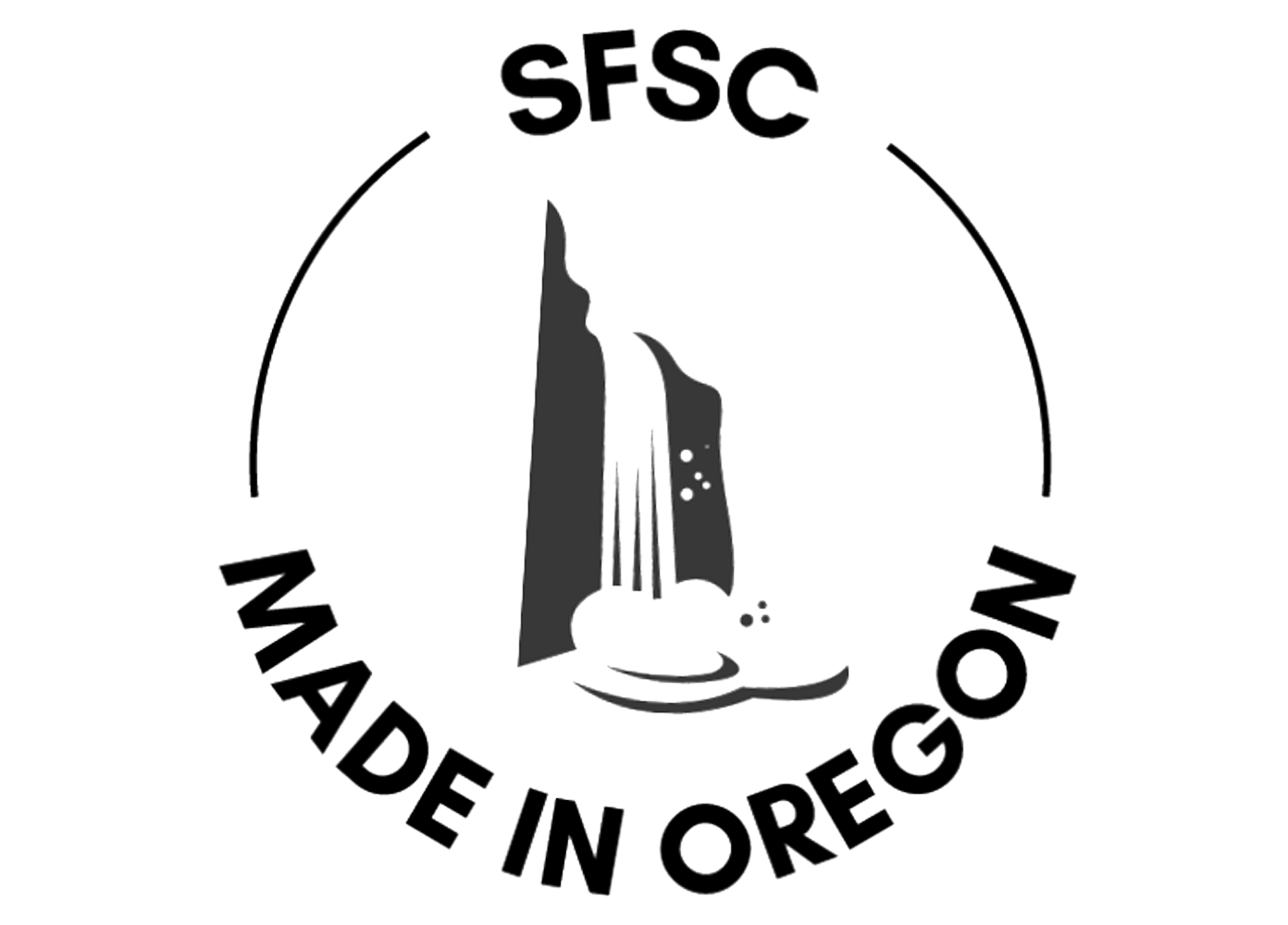

Imagine it’s the end of a stressful afternoon. You started your day by applying a new natural deodorant stick. Then the coffee pot broke and you got stuck on the phone with your insurance agent for a full hour — and that was before noon. You’re about to unplug and relax when you remember you have an appointment across town.
So you dash to the car and arrive just in time. You get out of the car and realize something awful: your new deodorant failed you. Those hours of stress-sweating left their stinky mark.
With no time to rush home, you’re stuck hoping no one notices.
Unfortunately, some natural deodorants just don’t make the cut. But conventional deodorants are often harmful to the planet and tough on your skin. That’s why we wanted a truly effective zero-waste deodorant — one that stands up to stress-sweats without toxic ingredients.
In this post, we'll talk about conventional deodorants, the types of natural deodorant & how to choose the best one for you, and the powerhouse ingredients in Silver Falls Sustainability Co. deodorant.
What are the problems with conventional deodorant and antiperspirant?
There are two main reasons we decided to avoid conventional products: to avoid harsh ingredients and reduce plastic pollution.
Most conventional deodorants contain harsh ingredients and chemicals. These include artificial fragrances, phthalates, parabens, or alcohol. Antiperspirants also contain aluminum, which blocks pores to reduce sweating. Some people find these ingredients cause underarm irritation over time.
And plastic deodorant tubes are a major contributor to pollution — most people go through anywhere between four to twelve tubes per year. Over a lifetime, that adds up fast!
So we choose natural, zero-waste deodorant.

All About Natural Deodorant
When you’re choosing a natural deodorant, it can be hard to know which kind will work for you. There is a huge variety of types and brands — each of them a little different. There’s also a wide spectrum of how “natural” these products are. Here’s a quick overview of the main types of natural deodorant.
Types of Natural Deodorant
Solid Deodorants come in a tube and feel a lot like conventional deodorant. Some are very similar to conventional deodorants while others have more natural ingredients. Our solid deodorant is made with 100% natural ingredients and packaged in sustainable Kraftboard.
- Pros: Easy to apply and store
- Cons: Many come in plastic tubes that are hard to recycle (which is why we use Kraftboard for our tubes!)
Paste Deodorants are softer than solids and usually come in a small jar. You apply them using your finger or a spreading tool.
- Pros: Often come in more sustainable packaging; easy to control portioning
- Cons: Often very temperature-sensitive and prone to melting; less convenient to apply
Gel Deodorants are sold in a gel form and come up when you turn a small dial. They typically go on shiny and dry clear.
- Pros: Easy to apply and store
- Cons: May be slow to dry or sticky; come in plastic packaging
Roll-On Deodorants are liquid and come in a plastic container with a rolling ball to apply.
- Pros: Easy to apply; typically last a long time
- Cons: May be slow to dry or transfer to clothing; come in plastic packaging
Spray-On Deodorants are also liquid, but you apply them by spraying under your arms.
- Pros: Dries quickly; easy to store
- Cons: Hard to apply precisely; often packaged in plastic; may contain propellants
Crystal Deodorants are usually just that — a solid crystal. They’re made from minerals that fight odors and are applied by wetting the top and rubbing on your underarm.
- Pros: Dries quickly; lasts a long time; generally good for sensitive skin
- Cons: May have a long adjustment period; doesn’t absorb underarm wetness
How to Choose the Right Deodorant For You
With so many options, it can be hard to know where to start. Here are a few things to remember as you choose a natural deodorant.
- Everybody is different. Your skin has a unique chemistry and what works for you may be different than others.
- Look at ingredients. Watch for ingredients you’re sensitive to, and look for nourishing natural ingredients to care for your skin.
- Read reviews. Try searching for product reviews before buying to hear about others’ experiences.
- Consider your priorities. For example, if you care about buying products that are cruelty-free or plastic-free, look for brands with those same priorities.
- Prepare for the detox. If this is your first time trying a natural deodorant, you will probably have an adjustment period that lasts anywhere from a few days to a week. Don’t give up!
- Be willing to try new things. You may find your ideal deodorant on the first try. (We hope you do!) If not, don’t be afraid to try a few more. Your perfect pit companion is out there.
What’s in our all-natural zero-waste deodorant?
In our quest to create the best zero-waste deodorant, we explored the world of natural ingredients. We wanted a combination that is tough on odor but gentle on the skin.
We knew there were some things we’d stay away from, like baking soda and harsh fragrances. After a lot of trial and error, we found a blend that our customers can’t stop talking about. Take a peek at each of our amazing ingredients.
Organic Coconut Oil
Organic Coconut Oil is extracted from the flesh of ripe coconuts. And isn’t just for cooking. We use it as a base for our deodorant because it’s packed with healthy fats that nourish your skin. Coconut oil’s low melting point helps our deodorant go on smooth. And it has natural anti-inflammatory and antibacterial properties to help break up odor-causing bacteria at its source.
Organic Shea Butter
Organic Shea Butter is made from oil-rich kernels in Shea seeds. Like coconut oil, it soothes and moisturizes your skin with healthy fats. And its antibacterial properties help kill odor so you stay fresh. Shea Butter is also rich in Vitamin A and Vitamin K, which help keep your skin healthy and happy.
Organic Cocoa Butter
Organic Cocoa Butter comes from the cocoa seed — it can be used to make chocolate, but it’s also a key part of our natural zero-waste deodorant. Cocoa butter is an antioxidant powerhouse, so it can help protect aging or dull skin. And it gives our deodorant a creamy texture and rich scent.

Beeswax
Beeswax in our deodorant is extracted from beehives by experienced keepers we work with locally. Bees create wax to build up their hive and protect their honey stores. Beeswax has some naturally antimicrobial properties to discourage bacteria buildup in your pits. It also helps our deodorant stay solid so you don’t end up with a tube of melted oils.
Kaolin Clay
Kaolin Clay was originally discovered in China but is found around the world. It’s gentler than other clays and helps absorb underarm moisture and toxins without drying your skin. And clay gives our deodorant a smoother consistency.
Tapioca Starch
Tapioca Starch comes from the cassava root, which is a hardy plant grown throughout the world. We use tapioca starch to thicken our deodorant, absorb underarm moisture, and reduce odors.
Diatomaceous Earth
Diatomaceous Earth is a must-have part of our deodorant — and it’s weirdly fun to pronounce. It’s a fine, naturally occurring sandy powder that is nearly pH neutral, so it’s safe for sensitive skin. Diatomaceous Earth eliminates odors and carries the scents of our essential oils so you smell fresh all day.
Magnesium Hydroxide
Magnesium Hydroxide is a naturally occurring mineral that’s often used in antiacids. It helps kill odor-causing bacteria and balance your skin’s pH — while also being gentle on the skin.
Zinc Oxide
Zinc Oxide is a naturally occurring powder that comes from the mineral zincite. You may recognize the name from its popular use in sunscreen. In our deodorant, Zinc Oxide helps reduce the growth of new bacteria that cause odor in your pits.
Grapeseed Oil
Grapeseed Oil is extracted from the seeds of grapes. It contains high amounts of linoleic acid — so it helps maintain your skin’s natural barrier and retain moisture.
Essential Oils
Essential Oils are the source of our scents. (Except for our Naturally Scented option, which does not contain any added scent.) Essential Oils are extracted from a variety of herbs and plants. They provide an eco-friendly fragrance that is less irritating than synthetic perfumes. Many essential oils also have other benefits for your skin!

A Natural Deodorant That Actually Works
Of course, “everybody is different” still applies to our deodorant. But happy people from all over tell us our deodorant finally solved their BO woes. And we often hear that one tube lasted customers six months or more.
Our natural deodorant has been battle-tested by nurses, backpackers, and pubescent teens. (And never on animals.) We worked hard to bring you a gentle, effective formula so you can have peace of mind throughout the day. All without any harm to the planet.
So even on your most stressful, sweaty days, we want to help you smell and feel great.
Try one of our best-selling zero-waste deodorants and discover the joy of staying fresh — naturally!


